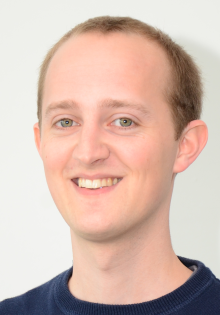Dr. Michael Laß

Paderborn Center for Parallel Computing (PC2)
Member - Research Associate - Scientific Advisor for FPGA Acceleration
Member - Research Associate
Phone:
+49 5251 60-1722
E-mail:
Office:
X0.128
Web:
Web (External):
Visitor:
Mersinweg 5
33100 Paderborn
33100 Paderborn
Research Interests
Approximate Computing; Parallel Programming; Scientific Computing; FPGA Design
Software and Hardware Projects
- Aurora HLS
- FPGA Infrastructure Fixes
- serialport_low_latency
- CP2K
- Submatrix Method
- Hardware Accelerated Cold-Boot Attacks
- Cryptographically enforced access control for Mercurial
- NetFPGA-10G OpenFlow Switch
Teaching
- Master's Thesis: AI-Engines for Electron Repulsion Integrals
- Project Group: MulFPGA
- Bachelor's Thesis: Exploring Potential Energy Saving Methods On The HPC Cluster Noctua 2
- Lecture: High-Performance Computing (summer term 22): Practical Exercises, Application Demos, Performance Engineering
- Lecture: High-Performance Computing (summer term 21): Application Demos, Performance Engineering (see winter term 20/21 for course material)
- Master's Thesis: Systematic Implementation of Linear Algebra Routines on FPGAs Using OpenCL
- Lecture: High-Performance Computing (winter term 20/21): Coordination, Application Demos, Performance Engineering
- Lecture: High-Performance Computing (winter term 19/20): Theoretical Exercises, Application Demos, Performance Engineering
- Lecture: High-Performance Computing (winter term 18/19): Exercises, Performance Engineering
- Master's Thesis: Approximate Conjugate Gradient on FPGAs
- Lecture: High-Performance Computing (winter term 17/18): Demonstration of Practical Performance Engineering
- Project Group: PACO
Talks
- Workshop on FPGA/xPU Accelerators for Future HPC and Datacenter (F4HD) @HiPEAC 2023: Running 80 FPGAs from two vendors in an HPC cluster - Experiences from the Noctua project at PC2
- AMD Technology Day 2022: Running 80 FPGAs in two HPC clusters: Infrastructure and Experiences at PC²
- Supercomputing Conference (SC) Conference 2020: A Submatrix-Based Method for Approximate Matrix Function Evaluation in the Quantum Chemistry Code CP2K
- Platform for Advanced Scientific Computing (PASC) Conference 2018: A Massively Parallel Algorithm for the Approximate Calculation of Inverse p-th Roots of Large Sparse Matrices
- Workshop on Approximate Computing (AC) 2016: Using Approximate Computing in Scientific Codes
Publications
Characterizing Microheterogeneity in Liquid Mixtures via Local Density Fluctuations
M. Lass, T. Kenter, C. Plessl, M. Brehm, Entropy 26 (2024).
Noctua 2 Supercomputer
C. Bauer, T. Kenter, M. Lass, L. Mazur, M. Meyer, H. Nitsche, H. Riebler, R. Schade, M. Schwarz, N. Winnwa, A. Wiens, X. Wu, C. Plessl, J. Simon, Journal of Large-Scale Research Facilities 9 (2024).
Scalable quantum detector tomography by high-performance computing
T. Schapeler, R. Schade, M. Lass, C. Plessl, T. Bartley, ArXiv:2404.02844 (2024).
A computation of D(9) using FPGA Supercomputing
L. Van Hirtum, P. De Causmaecker, J. Goemaere, T. Kenter, H. Riebler, M. Lass, C. Plessl, ArXiv:2304.03039 (2023).
Breaking the exascale barrier for the electronic structure problem in ab-initio molecular dynamics
R. Schade, T. Kenter, H. Elgabarty, M. Lass, T. Kühne, C. Plessl, The International Journal of High Performance Computing Applications (2023).
Bringing Massive Parallelism and Hardware Acceleration to Linear Scaling Density Functional Theory Through Targeted Approximations
M. Lass, Bringing Massive Parallelism and Hardware Acceleration to Linear Scaling Density Functional Theory Through Targeted Approximations, Universität Paderborn, Paderborn, 2022.
Towards electronic structure-based ab-initio molecular dynamics simulations with hundreds of millions of atoms
R. Schade, T. Kenter, H. Elgabarty, M. Lass, O. Schütt, A. Lazzaro, H. Pabst, S. Mohr, J. Hutter, T. Kühne, C. Plessl, Parallel Computing 111 (2022).
A Submatrix-Based Method for Approximate Matrix Function Evaluation in the Quantum Chemistry Code CP2K
M. Lass, R. Schade, T. Kühne, C. Plessl, in: Proc. International Conference for High Performance Computing, Networking, Storage and Analysis (SC), IEEE Computer Society, Los Alamitos, CA, USA, 2020, pp. 1127–1140.
Accurate Sampling with Noisy Forces from Approximate Computing
V. Rengaraj, M. Lass, C. Plessl, T. Kühne, Computation 8 (2020).
CP2K: An electronic structure and molecular dynamics software package - Quickstep: Efficient and accurate electronic structure calculations
T. Kühne, M. Iannuzzi, M.D. Ben, V.V. Rybkin, P. Seewald, F. Stein, T. Laino, R.Z. Khaliullin, O. Schütt, F. Schiffmann, D. Golze, J. Wilhelm, S. Chulkov, M.H.B.-H. Mohammad Hossein Bani-Hashemian, V. Weber, U. Borstnik, M. Taillefumier, A.S. Jakobovits, A. Lazzaro, H. Pabst, T. Müller, R. Schade, M. Guidon, S. Andermatt, N. Holmberg, G.K. Schenter, A. Hehn, A. Bussy, F. Belleflamme, G. Tabacchi, A. Glöß, M. Lass, I. Bethune, C.J. Mundy, C. Plessl, M. Watkins, J. VandeVondele, M. Krack, J. Hutter, The Journal of Chemical Physics 152 (2020).
A General Algorithm to Calculate the Inverse Principal p-th Root of Symmetric Positive Definite Matrices
D. Richters, M. Lass, A. Walther, C. Plessl, T. Kühne, Communications in Computational Physics 25 (2019) 564–585.
A Massively Parallel Algorithm for the Approximate Calculation of Inverse p-th Roots of Large Sparse Matrices
M. Lass, S. Mohr, H. Wiebeler, T. Kühne, C. Plessl, in: Proc. Platform for Advanced Scientific Computing (PASC) Conference, ACM, New York, NY, USA, 2018.
Using Approximate Computing for the Calculation of Inverse Matrix p-th Roots
M. Lass, T. Kühne, C. Plessl, Embedded Systems Letters 10 (2018) 33–36.
Efficient Branch and Bound on FPGAs Using Work Stealing and Instance-Specific Designs
H. Riebler, M. Lass, R. Mittendorf, T. Löcke, C. Plessl, ACM Transactions on Reconfigurable Technology and Systems (TRETS) 10 (2017) 24:1-24:23.
Confidentiality and Authenticity for Distributed Version Control Systems - A Mercurial Extension
M. Lass, D. Leibenger, C. Sorge, in: Proc. 41st Conference on Local Computer Networks (LCN), IEEE, 2016.
Using Approximate Computing in Scientific Codes
M. Lass, T. Kühne, C. Plessl, in: Workshop on Approximate Computing (AC), 2016.
Localization and Analysis of Code Paths Suitable for Acceleration using Approximate Computing
M. Lass, Localization and Analysis of Code Paths Suitable for Acceleration Using Approximate Computing, Paderborn University, Paderborn, 2015.
Sichere Speicherung vertraulicher Daten in verteilten Versionskontrollsystemen
Show all publications
M. Lass, Sichere Speicherung Vertraulicher Daten in Verteilten Versionskontrollsystemen, Paderborn University, Paderborn, 2013.
